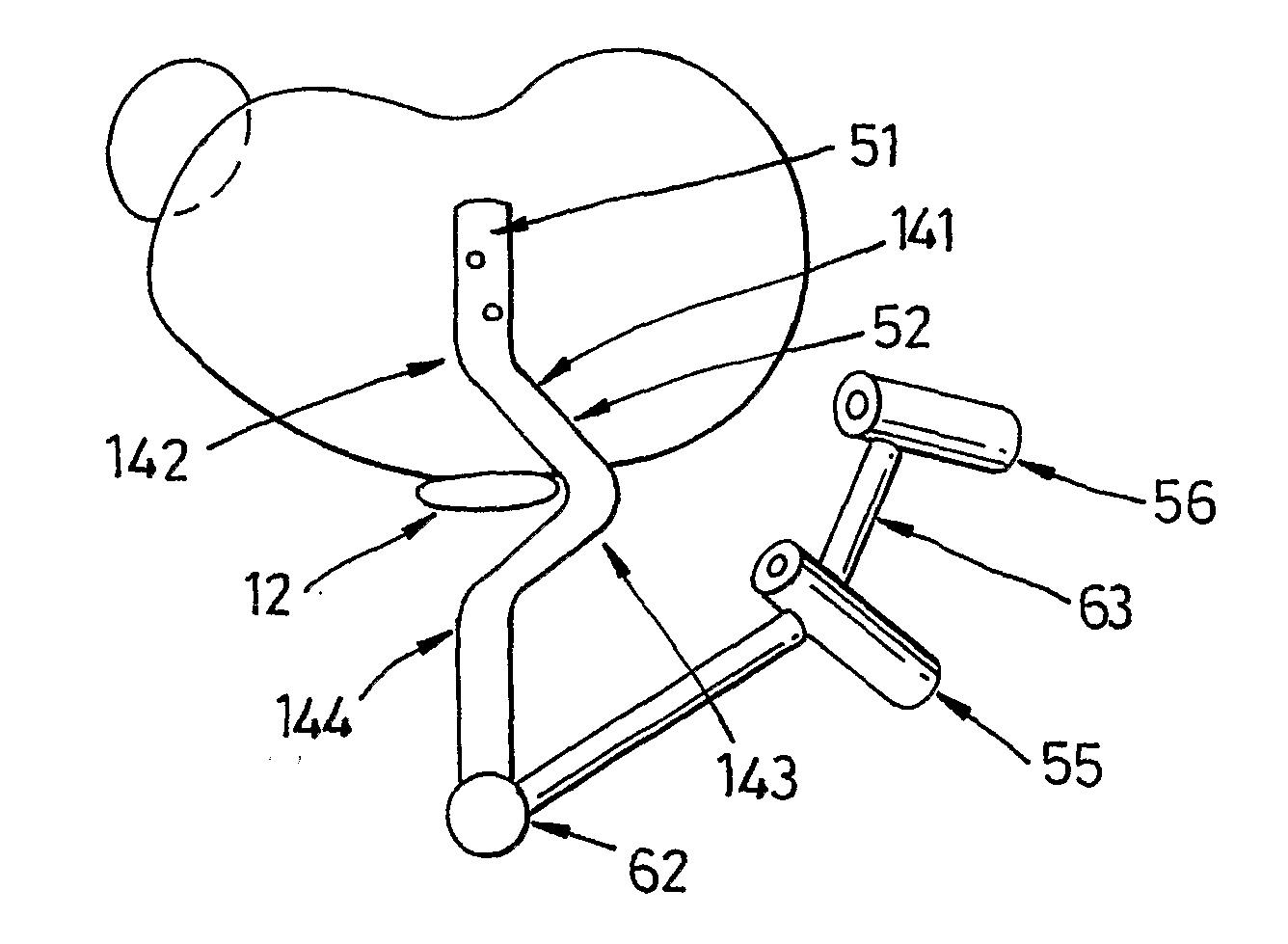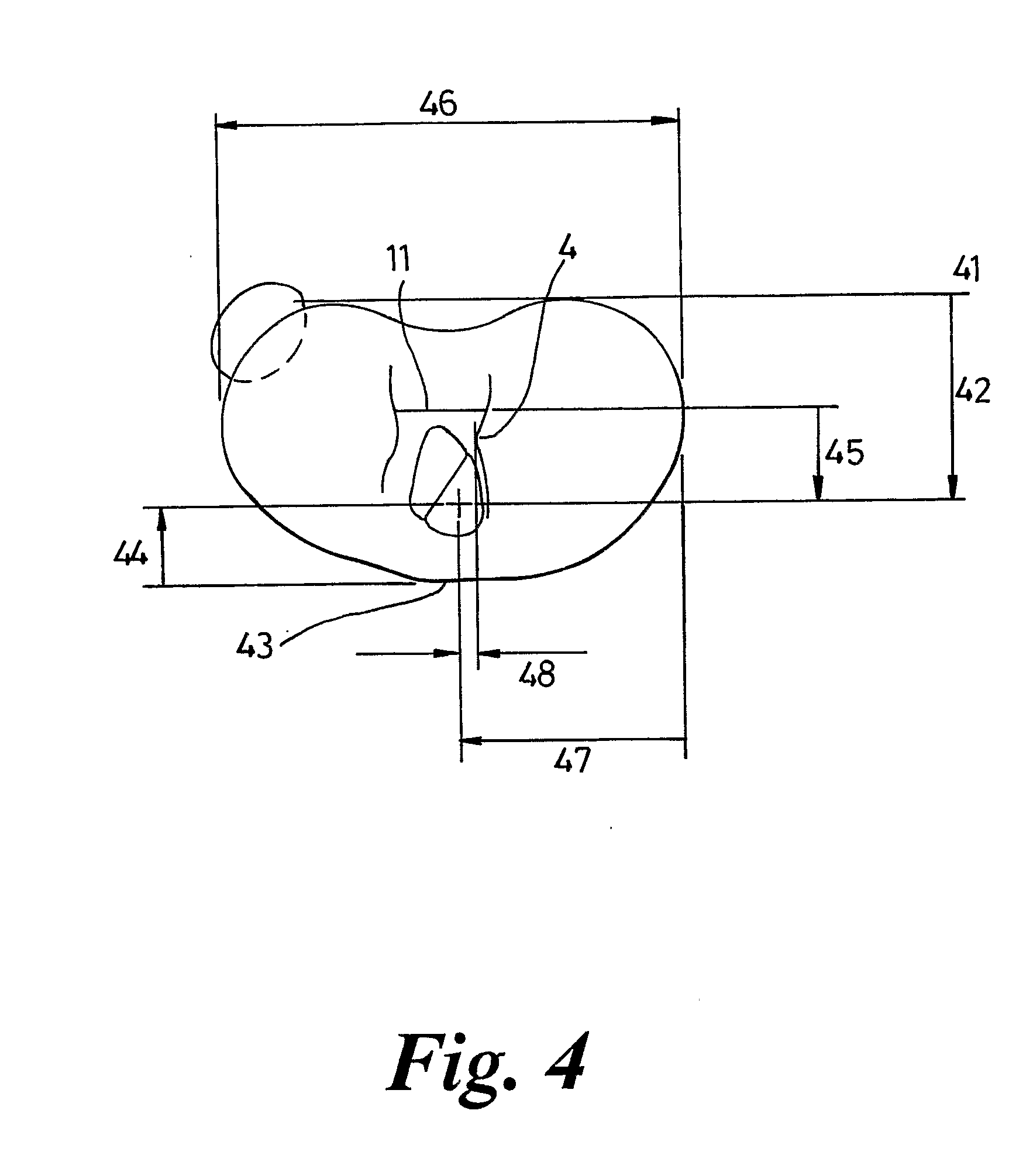Reconstruction of Anterior Cruciate Ligaments
a technology reconstruction, which is applied in the field of reconstruction of anterior cruciate ligament, can solve the problems of increased potential for surgical error, difficult single-bundle acl reconstruction procedure, and creation of four tunnels, so as to reduce or eliminate subjective judgement regarding tunnel placement, facilitate double-bundle acl reconstruction, and reduce the effect of surgical error
- Summary
- Abstract
- Description
- Claims
- Application Information
AI Technical Summary
Benefits of technology
Problems solved by technology
Method used
Image
Examples
Embodiment Construction
[0062]FIG. 1 is a simplified representation of the anatomy of the tibial plateau, that is the top surface of the tibia. This looks down onto the tibial plateau of a right knee: anterior is at the bottom, posterior at the top, medial to the right and lateral to the left. The main articular bearing areas are the medial tibial plateau 1 and the lateral tibial plateau 2. The head of the fibula 3 is postero-lateral. The plateaux 1, 2 are limited in extent towards the centre of the tibia when they reach bony ridges: the medial tibial spinous process 4, and the lateral tibial spinous process 5. There is a trough, or fossa 6, between the spines 4, 5, the interspinous fossa. Posteriorly, the PCL attaches in a posterior attachment area 7 between the medial and lateral plateaux 1, 2. Anteriorly, the ACL attaches in an anterior attachment area 8 within the interspinous fossa 6. This attachment 8 may be divided into two attachment areas, where separate fibre bundle attachments are located: one i...
PUM
 Login to View More
Login to View More Abstract
Description
Claims
Application Information
 Login to View More
Login to View More - R&D
- Intellectual Property
- Life Sciences
- Materials
- Tech Scout
- Unparalleled Data Quality
- Higher Quality Content
- 60% Fewer Hallucinations
Browse by: Latest US Patents, China's latest patents, Technical Efficacy Thesaurus, Application Domain, Technology Topic, Popular Technical Reports.
© 2025 PatSnap. All rights reserved.Legal|Privacy policy|Modern Slavery Act Transparency Statement|Sitemap|About US| Contact US: help@patsnap.com



